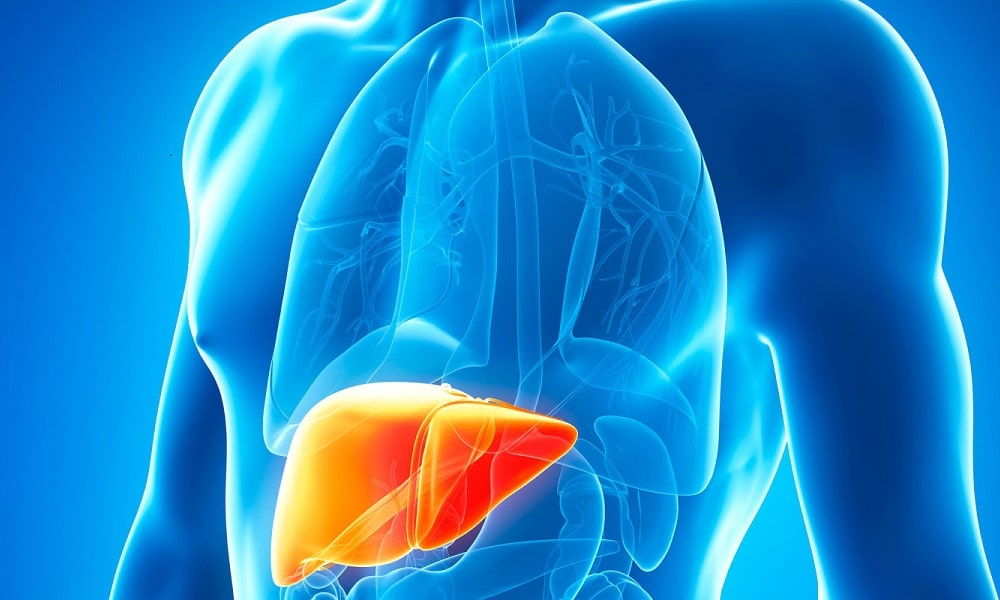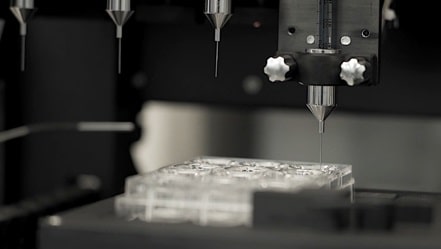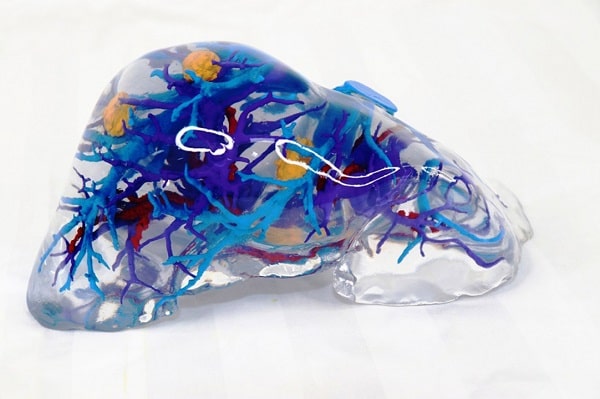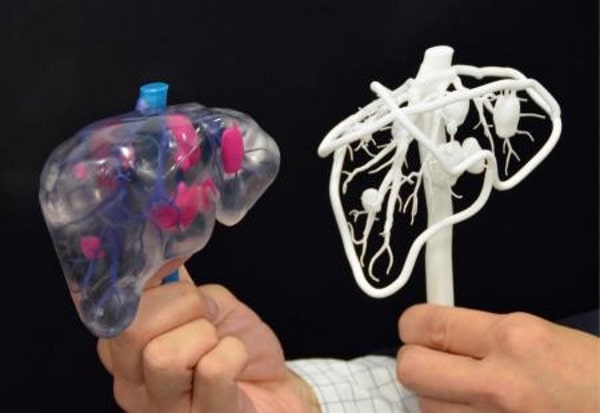Medical 3D printing: Discover the 3D printed liver
Posted By Lucie Gaget on Oct 9, 2019 | 0 comments
Medical 3D printing will never stop surprising us. You maybe heard about it before, but 3D printing organs is now becoming a promising solution in the medical industry. Today, we will tell you about the new possibilities of the 3D printed liver. It is not a dream anymore, some tests and developments have been made by surgeons and researchers. There are actually several ways to use 3D printing for organ transplants: 3D printing actual liver tissue or 3D models of livers.
How is it possible now to 3D print livers, and what are the benefits of 3D printing these human organs? Let’s discover it right now.
The promise of 3D printed organs
It’s not surprising to hear that organ donation is a huge problem. There are not enough organ donors for the amount of transplants needed. At the moment you are reading this blog post, 14,000 people are on the liver transplant list, according to the American Liver Foundation, and 10% of them die before they receive a donor’s liver.
The 3D printing technology can be a solution on different levels for surgeons. As we will see it in this blog post, additive manufacturing can be helpful for organs transplants, it can be both by bioprinting living organs, or 3D printing organs models.
3D printing organs could be the next big revolution for the medical sector, helping to save time, and more importantly, helping to save lives. We already saw that experiments were made all around the world to create 3D printed human lungs, or 3D printed hearts. But what about 3D printed livers?
Bioprinting: A solution for a liver transplant?
New evolutions are happening, both in the 3D printing industry and in the medical field. Combining these two sectors is actually leading to great discoveries and one of them is 3D bioprinting.
As magic as it sound, bioprinting is a way to use additive manufacturing to recreate living tissues and organs. And now your big question is certainly: but how does this revolutionary technique work? This bioprinting technology could have many different applications and organ transplants might be one of its main applications.
The bioprinting method uses bioinks, a material allowing the adhesion and proliferation of living cells. These bioinks are hydrogel biomaterials, providing support to the cell while they produce their own natural extracellular matrix. Using bioprinting for organ transplant means using liver cells of the patient, to create their own organ.
This way, there would be no risk of rejection! First, patients would be sure to be transplanted, and then, no rejection would be feared after the surgery as this would be closer to regenerative medicine.
NovoGen Bioprinter® Platform
But before even being able to 3D print a functional liver, some bioprinted solutions can already be used. For example, the bioprinting company Organovo, based in San Diego, is experimenting with 3D printed human liver tissue patches. These patches are made to extend patients’ lives before they can finally receive their transplant.
Partial liver transplant seems to be promising, showing that it is actually possible to print functional 3D tissues. The first partial liver transplants with these bioprinted patches are targeted for 2020.
But it is not the only application of these 3D printed liver patches that are helping researchers to develop and test drugs, as their 3D printed human tissues mimic real livers. Instead of testing on animals, it is becoming possible to test directly on human tissue or organs as these bioprints have the exact same properties and reactions! This is quite promising both on the ethical side and budget, as these experiments to test products are really expensive.
How can 3D printed liver models be useful to save lives?
Saving lives with 3D models
While we are waiting for bioprinting and organ 3D printers to improve a little bit, the healthcare sector is already making the most of additive manufacturing by developing a 3D model to save their patient’s lives.
More and more surgeons are using 3D printing to create models in order to train before the surgery. Indeed, using this process is helping surgeons become more efficient, and save time. They 3D print the organs they need to practice before the surgery, so they know exactly what to do on the big day, with all gestures and specificities linked to this precise case. They are prepared and able to predict some eventual problems.
3D printed liver models made donation possible for mother and son
Now, we will tell you about an amazing story and medical experiment, made possible thanks to 3D printing. Indeed, this technology recently enabled a liver transplant from a son to his mother.
Gwen Finlayson developed cirrhosis, due to autoimmune hepatitis. She was on the liver transplant list, but her son offered his liver, to save his mother’s life. In order to perform the surgery, surgeons from Intermountain Transplant Service decided to create a 3D printed model of both livers, using 3D imaging.
This way, surgeons knew exactly what was going to happen during the actual surgery. Getting a model of these two livers helped them to prepare the surgery perfectly. Because of Gwen’s small size, only one lobe of her son’s liver was taken for this transplant.
This surgery was a great success, the patients went home after only a few days in the hospital. After this success, the Intermountain Transplant Service is now trying to develop a 3D printed liver library, in order to educate patients and surgeons with all these 3D models.
Indeed, surgeons explained that using 3D printing to have a physical liver model was easier to visualize and go step by step, before the actual surgery, than just checking the liver on a screen.
3D printed liver with visible blood vessels
For the same educational purposes, other 3D bioprinted organ models have been developed. For example, a team of Japanese scientists developed a 3D printed liver with visible blood vessels.
This liver is printed in transparent resin, allows seeing all blood vessels through it. It is a real alternative to previous models, which were hollowed in order to leave all blood vessels apparent.
As you can see in the picture below, this 3D liver is way more realistic and will be helpful for research and educational purposes:
Do you have a medical project? Do you want to create your custom made surgical tool? Start to make the most of 3D printing right now by uploading your 3D file on our online 3D printing service.
Choose among 75+ materials and finishing combinations and make the most of additive manufacturing. If you have any questions, don’t hesitate to contact our sales team, they will help you develop your 3D printing project.
Don’t forget to subscribe to our newsletter to get the latest updates about the 3D printing world.


 Connect with Google
Connect with Google Connect with Facebook
Connect with Facebook


